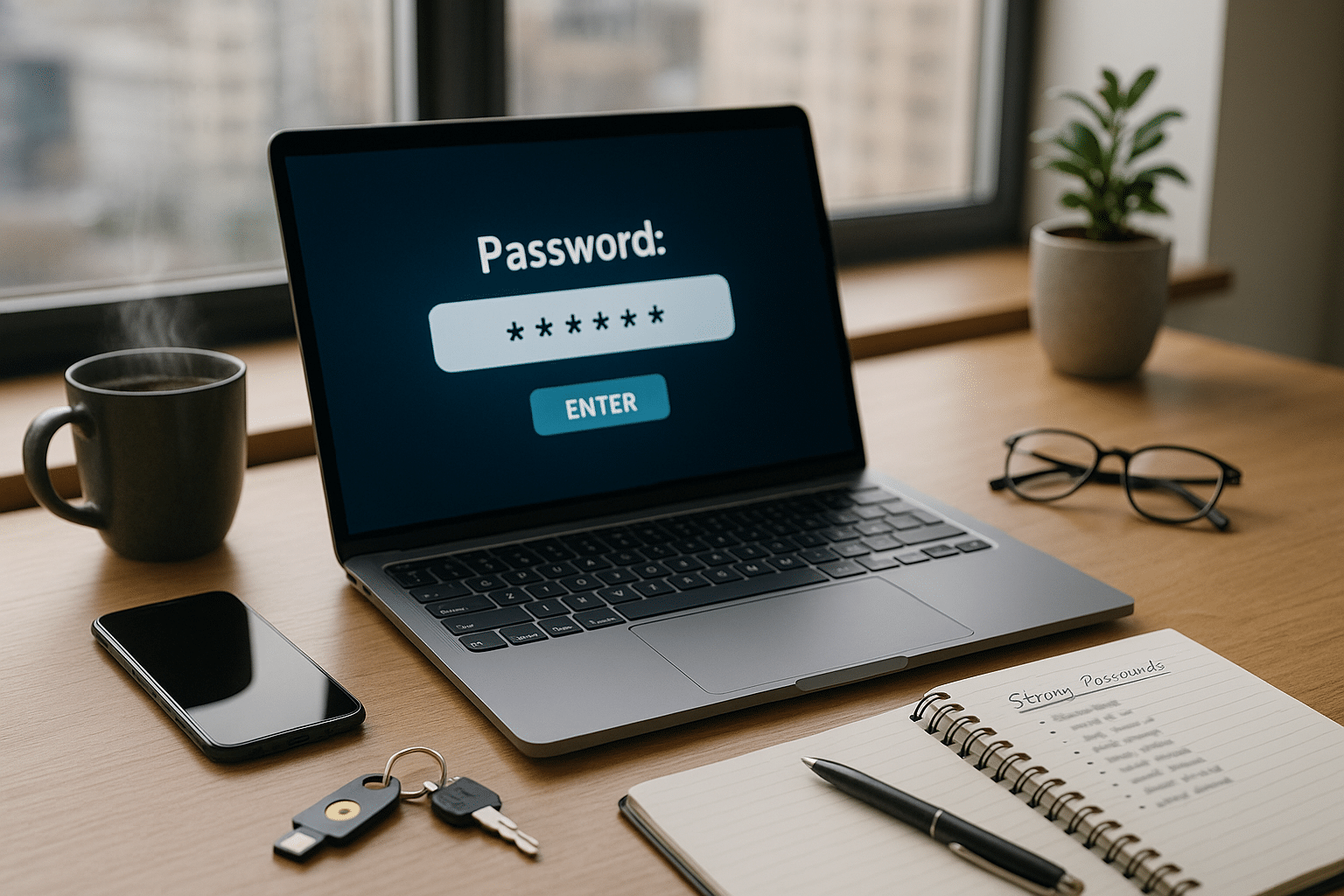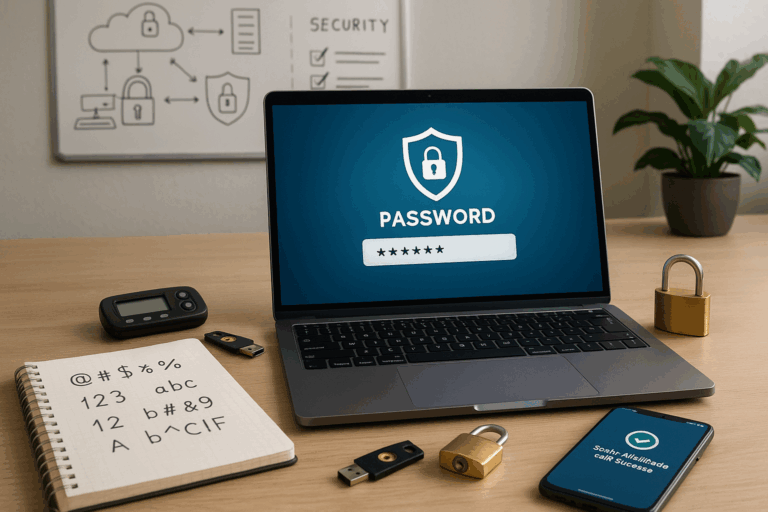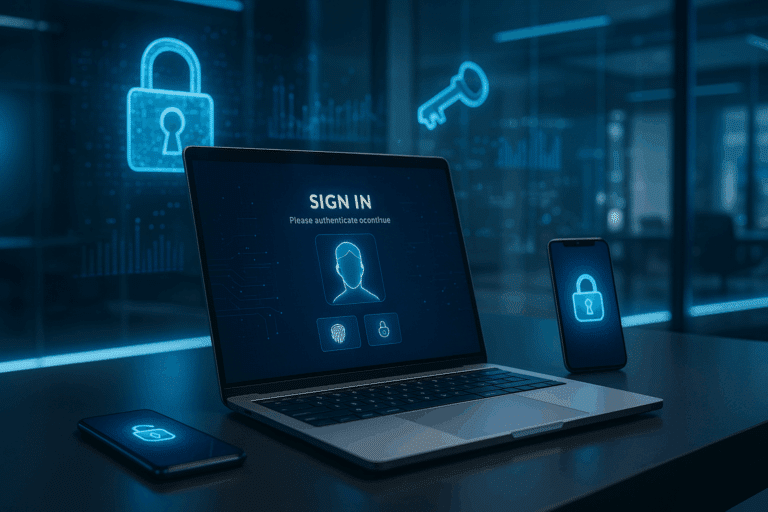In a perfect world, each of our online accounts would be guarded by a unique, uncrackable code, acting as an unbreachable shield against hackers’ attacks. Unfortunately, the reality is often quite different, riddled with common password mistakes that leave our digital lives dangerously exposed.
Today’s article, “Unlock Your Security: Avoid These Common Password Mistakes for Ultimate Protection Online,” embarks on an in-depth exploration into the pivotal role passwords play in our digital security. We will dissect the anatomy of common password errors 🔍, unraveling the security vulnerabilities they create. Moreover, we’ll share proven strategies to level up your password game, transforming your weak links into formidable barriers.
As an experienced professional in the field of IT and software engineering, I’ve seen first-hand the devastating effects of password negligence and the havoc it can wreak on individuals and businesses alike. Thus, I believe it’s crucial to equip ourselves with the necessary knowledge and tools to fortify our digital walls, making them impervious to threats lurking in the virtual world.
🔓The Human Element in Password Security
The discussion begins by shedding light on a crucial aspect of password security that’s often overlooked – the human element. Cybersecurity isn’t merely a technical challenge but a human one, as well. The most advanced security systems can be rendered futile if we, the users, don’t adhere to good password practices. We’ll explore how our behaviors and tendencies contribute to weak passwords, setting the stage for cybercriminals to strike.
❌ Common Password Mistakes
Next, we delve into the meat of the matter – the common password mistakes. From the seemingly innocuous habit of password reuse to the hazardous trend of using easily guessable passwords, we’ll discuss each error in detail, highlighting their potential dangers.
💡Smarter Password Practices
Learning from mistakes is wise, but avoiding them is even better. That’s why the latter part of our journey focuses on smarter password practices. We’ll provide a series of actionable tips 🛠️ and tricks to help you strengthen your passwords and, by extension, your digital security. We’ll discuss everything from the art of crafting strong passwords to the benefits of employing password managers.
In a world where data breaches and cybercrimes are increasingly common, adopting strong password habits is no longer optional but a necessity. By the end of this article, we hope to have equipped you with the knowledge and tools you need to fortify your digital defenses and navigate the online world with confidence.
So, buckle up, as we dive headfirst into the intriguing world of passwords, unraveling their complexities and mastering the art of securing them. Remember, in the battle for online security, knowledge is your most potent weapon, and awareness your most reliable shield. Let’s arm ourselves and march forward! 🛡️🏹
Unleashing Your Security: Online Protection Starts With Your Password
Living in the digital era has its perks, but it also comes with its fair share of challenges. One of those is security. We store so much of our lives online – our identities, our finances, our memories – that it has become more critical than ever to protect our information from online threats. But how do we achieve that? The answer lies in our passwords. This article will dive deep into common password mistakes and how to avoid them for ultimate online protection. 👨💻🔒
Don’t underestimate the power of a strong password. It is the first and, in many cases, the only line of defense against unauthorized access to your online accounts. Unfortunately, many users tend to overlook this fact and end up making common password mistakes that can have serious consequences.
Before we delve into the specifics, let’s understand what a secure password looks like. A strong password is unique and complex, consisting of at least 12 characters, including numbers, symbols, and both upper and lowercase letters. It’s also something that isn’t easily guessable or found in a dictionary.
Common Password Mistakes and How to Avoid Them
Here are some of the most common password mistakes people make and tips on how to avoid them:
1. Using Common Passwords
It’s shocking how many people use passwords like “123456”, “password”, or “qwerty”. These are some of the most common passwords and the first ones that hackers will try. Avoid using these at all costs. Instead, opt for a password that is unique and difficult for others to guess.
2. Password Recycling
Using the same password across multiple platforms is another common mistake. If one of your accounts gets compromised, all of your accounts are at risk. Use a unique password for each of your online accounts.
3. Sharing Passwords
Never share your passwords with anyone, not even with trusted friends or family. You never know who else might get access to it. Keep your passwords to yourself.
Unlocking Ultimate Online Protection: Tools and Strategies
Beyond avoiding common password mistakes, there are several tools and strategies that can significantly enhance your online security. Let’s explore some of them:
Password Managers
Password managers are applications that store all your passwords in one secure place. They can generate strong, unique passwords for each of your accounts and automatically fill them in for you. Some popular password managers include LastPass, 1Password, and Dashlane. To learn more about how password managers work, watch this video “What is a Password Manager and How Does it Work?” by the YouTube channel, Tech Insider.
Two-Factor Authentication (2FA)
Two-factor authentication is a security process in which the user provides two different authentication factors to verify themselves. This process adds an extra layer of protection to your accounts. Many services offer 2FA, and it’s always a good idea to enable it whenever possible.
Password Strength Testers
Password strength testers are online tools that assess the strength of your passwords. They can give you an idea of how secure your passwords are and offer suggestions for improvement. Remember, however, that no password is entirely uncrackable, but making it as strong as possible can deter potential hackers.
Comparative Overview: Common Password Mistakes vs. Best Practices
| Common Password Mistakes | Best Practices |
|---|---|
| Using common passwords | Use unique, complex passwords |
| Recycling passwords | Use a different password for each account |
| Sharing passwords | Keep your passwords to yourself |
Now that you have a better understanding of common password mistakes and how to avoid them, it’s time to take action. Start by reviewing your current passwords and making necessary changes. Remember, your online security is in your hands. Don’t let a weak password be the downfall of your online protection.
For a more in-depth understanding of password security, I highly recommend watching this video “Password Security: How Easily Can Your Password Be Hacked?” by SciShow on YouTube.
Stay safe online! 🔐💻

Conclusion
In conclusion, we have meticulously navigated through the essential and technical aspects of Software Engineering. Undeniably, this article has been an enlightening journey, uncovering the intricacies of this technological field that has revolutionized our world in unprecedented ways. Through our exploration, we have not only unraveled the basic principles and practices that define software engineering but have also delved into its various subfields, methodologies, and processes.
From the onset, we have clarified what software engineering entails, distinguishing it from the broader field of computer science. We have also underscored the importance of understanding the user’s requirements and the role of requirement analysis in the software development lifecycle. We proceeded to discuss the various models of software development, including the Waterfall model, Agile model, and DevOps, each with its unique strengths and weaknesses.
Furthermore, we examined software testing, an integral aspect of ensuring software quality. We also explored software maintenance, the stage that ensures the software remains functional and efficient after its release. We then reviewed the emerging trends and future projections of the field, particularly in relation to AI, machine learning, and cybersecurity.
Overall, the depth and breadth of this discussion have reaffirmed the complexity, dynamism, and indispensability of software engineering in our contemporary digital era. The advances we are experiencing in various sectors, from healthcare to finance to education, are largely underpinned by the profound transformations that software engineering continues to bring forth.
Whether you are a budding software engineer, a seasoned professional, or simply a tech enthusiast, I trust this article has sparked new insights, aroused your curiosity, and expanded your understanding. Feel free to share your thoughts, comments, or questions below. Let’s keep the conversation going!👇 If you found this article informative, do not hesitate to share it with your networks.🌐 Remember, knowledge shared is knowledge multiplied!
For further reading, you may explore the following resources:
– IEEE Computer Society – Technical Committee on Software Engineering📚
– ACM SIGSOFT – The Association for Computing Machinery’s Special Interest Group on Software Engineering🔬
As the great philosopher Socrates once said, “The only true wisdom is in knowing you know nothing.” Therefore, let’s continue learning, exploring, and innovating. Who knows? You could be the mind behind the next groundbreaking software!
Remember to always strive for excellence in your craft, foster collaboration, and embrace continuous learning. Together, we can shape a future driven by technology, yet humane in essence.🚀
Sources:
1. IEEE
2. ACM
[Please, note that some external links may no longer be active]



